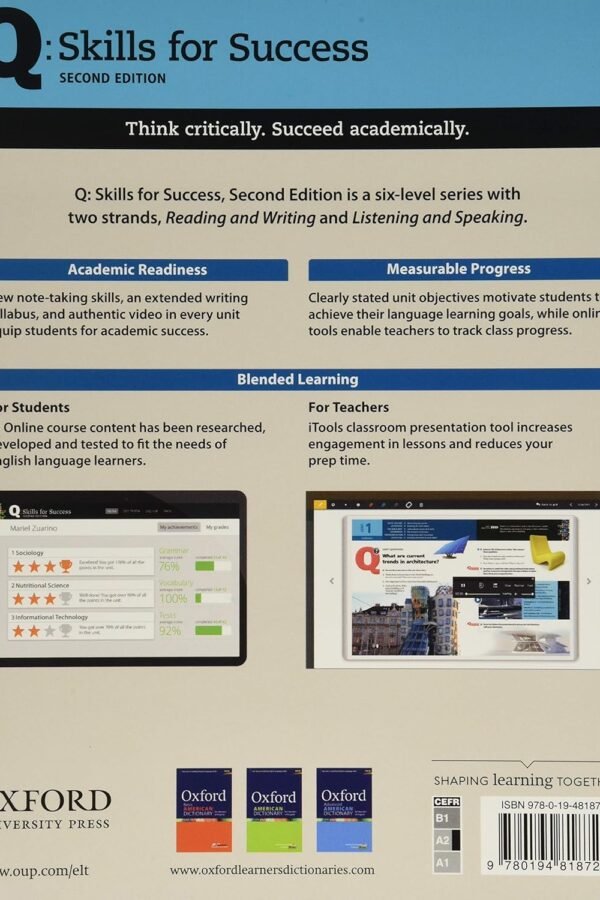In the article “Can you ask to see your future workspace before accepting a job offer?”, the author explores the importance of requesting to see your future workspace during the interview process. The author highlights their personal experience of accepting a job without knowing that they would be stuck in a tiny, poorly lit office, which caused health issues and dissatisfaction. They argue that the work environment plays a significant role in one’s day-to-day quality of life, and therefore, it should be a standard part of the hiring process to show candidates their future workspace. The article provides practical tips on how to ask for a workspace tour, whether you’re interviewing in person or through remote means. Ultimately, the author advises candidates to prioritize understanding their future work environment before committing to a job offer.
Reasons to See Your Future Workspace
Importance of a well-planned office
A well-planned office can have a significant impact on your overall work experience and job satisfaction. It is not just a physical space where you spend your working hours; it sets the tone for collaboration, productivity, and overall well-being. A thoughtfully designed workspace can promote creativity, foster positive interactions with colleagues, and enhance your overall job performance.
Job satisfaction and quality of life
Your workspace plays a crucial role in your job satisfaction and quality of life. Imagine spending hours each day in a cramped, windowless office with poor lighting and uncomfortable furniture. Such an environment can negatively affect your mood, productivity, and overall well-being. On the other hand, a well-planned workspace with ample natural light, ergonomic furniture, and a functional layout can contribute to a more positive work experience and a better quality of life.
Physical and mental health considerations
The impact of a poorly designed workspace on physical health cannot be overstated. Sitting for long hours in an uncomfortable chair or at a poorly positioned desk can lead to musculoskeletal issues, such as back and neck pain. Inadequate lighting and lack of natural light can strain your eyes and cause headaches. Moreover, a cluttered and disorganized workspace can increase stress levels and make it difficult to focus. By assessing your future workspace before accepting a job offer, you can prioritize your physical and mental well-being.
How to Ask to See Your Future Workspace
In-person interviews
If you have the opportunity to interview in person, it is the perfect time to request a visit to your future workspace. Towards the end of the interview, politely and professionally ask if it would be possible to see the office space where the role operates from. Frame your request as a normal and reasonable expectation, emphasizing that you would like to get a sense of the environment you will be working in.
Remote or virtual interviews
In cases where your interviews are conducted remotely or virtually, it may seem more challenging to request a visit to the workspace. However, you can still express your interest in seeing the office even if you haven’t been able to do so yet. Request a short in-person meeting, even if it’s just for a quick tour to get a better feel for the workspace. This demonstrates your commitment to understanding the work environment and can help you make a more informed decision.

Tips for Requesting to See Your Future Workspace
Be polite and professional
When asking to see your future workspace, always maintain a polite and professional tone. Remember that you are requesting a reasonable and important consideration. Approach the conversation with a positive attitude and express your interest in evaluating the office environment to ensure a good fit for both parties.
Frame the request as a standard practice
Explain that it is your standard practice to assess the workspace before accepting a job offer. Emphasize that you believe a well-planned office is vital to both your productivity and job satisfaction. By presenting it as a standard practice, you normalize the request and demonstrate that it is not an unusual or unreasonable ask.
Highlight the role of the workspace in decision-making
Clearly communicate the importance of the workspace in your decision-making process. Explain that you believe a conducive work environment is critical to your performance and overall well-being. By emphasizing the impact of the workspace on your ability to excel in the role, you position your request as a valid consideration.
Emphasize the impact on productivity and performance
A well-planned workspace can have a significant positive impact on productivity and job performance. Stress the importance of maximizing your potential contribution to the organization and highlight how a suitable workspace will facilitate that. By tying your request to improved productivity and performance, you make a compelling case for seeing your future workspace.
Prepare Questions and Observations for the Visit
Evaluate the lighting conditions
Assess the lighting conditions in your future workspace. Is there adequate natural light? Are there sufficient artificial lighting options? Evaluate how well the lighting aligns with your preferences and needs.
Check the ergonomics and workspace setup
Pay attention to the ergonomic features of the office furniture and equipment. Ensure that the chair, desk, and other essentials are adjustable and suitable for maintaining a healthy posture throughout the day. Consider how the workspace setup aligns with your workstyle and whether it promotes comfort and efficiency.
Assess the noise level and office layout
Observe the noise level and office layout. Is the environment quiet and conducive to concentration? Are there designated areas for collaboration and interaction? Consider how the office layout aligns with the nature of your work and if it supports your preferred style of working.
Consider proximity to amenities and facilities
Take note of the proximity of the office to amenities and facilities that are important to you. Consider factors such as proximity to public transportation, food options, gyms, and other resources that contribute to your overall convenience and work-life balance.
Observe the general cleanliness and maintenance
Pay attention to the general cleanliness and maintenance of the office space. A well-maintained and clean workspace can have a positive impact on your overall experience. Assess the tidiness and organization of the office to determine if it aligns with your preferences and standards.

Keep in Mind Potential Changes
Anticipate possible workspace changes
While it is essential to assess your future workspace before accepting a job offer, it is also important to anticipate that changes may occur after you start working. Office reorganizations, renovations, or space allocation adjustments could happen due to various reasons. Be mentally prepared for potential changes and understand that the initial workspace you observe may not be permanent.
Consider the company’s track record
Research and consider the company’s track record when it comes to their workspace. If the company has a history of investing in and prioritizing employee work environments, it is more likely that they will maintain a positive and conducive office space. Look for signs of a company culture that values employee well-being and takes appropriate steps to create an optimal work environment.
Be open to adaptability
Even if the initial workspace does not meet all your preferences, consider your ability to adapt and make the best of the situation. Sometimes, minor adjustments or personalized additions can significantly improve your work experience. By maintaining an open mindset, you increase the chances of finding satisfaction in your workspace, even if it’s not perfect from the beginning.
Have realistic expectations
While it is important to advocate for a suitable workspace, it is essential to have realistic expectations. No office environment will be flawless, and compromise may be necessary. Focus on the most critical factors that significantly impact your work and well-being, and be willing to prioritize those aspects during the decision-making process.
Signs to Watch Out for during the Visit
Cluttered and disorganized workspace
A cluttered and disorganized workspace can negatively impact your productivity and overall work experience. If you observe excessive clutter or a lack of organization, it may be an indication of ineffective work practices or a potential limitation in the work environment.
Poor lighting or lack of natural light
Inadequate lighting, especially a lack of natural light, can have adverse effects on your mood, focus, and overall well-being. If the workspace has poor lighting conditions or a lack of access to natural light, it may impact your ability to work comfortably and efficiently.
Inadequate or uncomfortable furniture
Uncomfortable furniture, such as chairs and desks that are not ergonomically designed, can lead to physical health issues and discomfort. If the workspace lacks suitable furniture that allows for proper posture and comfort, it may adversely affect your physical health and overall work experience.
Unpleasant smells or hygiene issues
An unpleasant smell or hygiene issues in the workspace can create a negative and distracting environment. If you notice any unpleasant odors or hygiene-related concerns, it may impact your ability to focus and feel comfortable in the workspace.
Distracting noise or lack of privacy
Excessive noise or a lack of privacy in the workspace can be detrimental to your concentration and overall work experience. If the workspace lacks soundproofing or designated areas for focused work, it may create disruptions and hinder your productivity.

Questions to Ask during the Workspace Visit
Can I request specific adjustments or accommodations?
During the workspace visit, inquire about the possibility of requesting specific adjustments or accommodations to suit your needs. For example, if you require a standing desk or special lighting due to health reasons, it’s important to determine if these requests can be accommodated.
Are there any plans for office renovations or reorganizations?
Ask if there are any plans for office renovations or reorganizations in the near future. This will give you an idea of potential changes and whether your initial workspace may be subject to modifications.
What is the company’s policy on remote work or flexible schedules?
Inquire about the company’s policy on remote work or flexible schedules, especially if these options are important to you. Understanding the flexibility that exists in the organization’s work arrangements will help you assess if it aligns with your preferences and needs.
How do you prioritize employee well-being and workspace improvements?
Ask about the company’s approach to employee well-being and workspace improvements. A company that values employee well-being and actively seeks to improve the workspace demonstrates a commitment to creating a positive work environment.
Considerations for Remote Workspaces
Virtual tours or video calls
In situations where it is not possible to physically visit the remote workspace, ask if there are virtual tours or video calls available. This can provide you with an opportunity to gain a sense of the remote work environment and ask any specific questions you may have.
Requesting photos or videos of the workspace
If virtual tours or video calls are not feasible, request photos or videos of the remote workspace. This will allow you to visualize the working conditions and better understand the environment you would be working in.
Clarifying equipment and technology provisions
When considering a remote workspace, ensure you have a clear understanding of the equipment and technology provisions. Inquire about the availability of necessary tools and resources to perform your job effectively, such as laptops, software, and communication platforms.
Importance of Workspaces in Job Decision-making
Impact on job satisfaction and retention
The workspace plays a crucial role in job satisfaction and retention. A well-planned office that aligns with your preferences and needs can contribute to greater job satisfaction, improving the likelihood of long-term retention and commitment.
Relationship between productivity and workspace
Numerous studies have shown a strong relationship between the workspace environment and productivity. An optimal workspace promotes concentration, collaboration, and creativity, leading to higher levels of productivity and job performance.
Long-term effects on physical and mental health
A poorly designed workspace can have long-term effects on both physical and mental health. Musculoskeletal issues, eye strain, and increased stress levels are just a few examples of how an unsuitable workspace can negatively impact your overall well-being. Prioritizing a healthy and supportive work environment is vital for long-term physical and mental health.
Considering work-life balance and well-being
A well-planned workspace contributes to a healthy work-life balance and overall well-being. Factors such as proximity to amenities, access to natural light, and comfortable furniture all play a role in promoting well-being and making the work-life balance more manageable.
Conclusion / Final Thoughts
Workspaces are a critical factor in job acceptance and overall satisfaction. Assessing your future workspace before accepting a job offer is a proactive approach to ensure compatibility and set yourself up for success. By requesting to see your future workspace, you advocate for a healthy and productive work environment that can contribute to your overall well-being and job performance. Remember to approach the request professionally, frame it as a standard practice, and emphasize the impact of the workspace on your productivity and satisfaction. By considering the physical and mental health aspects, adapting to potential changes, and having realistic expectations, you can make a more informed decision that aligns with your needs and priorities.














